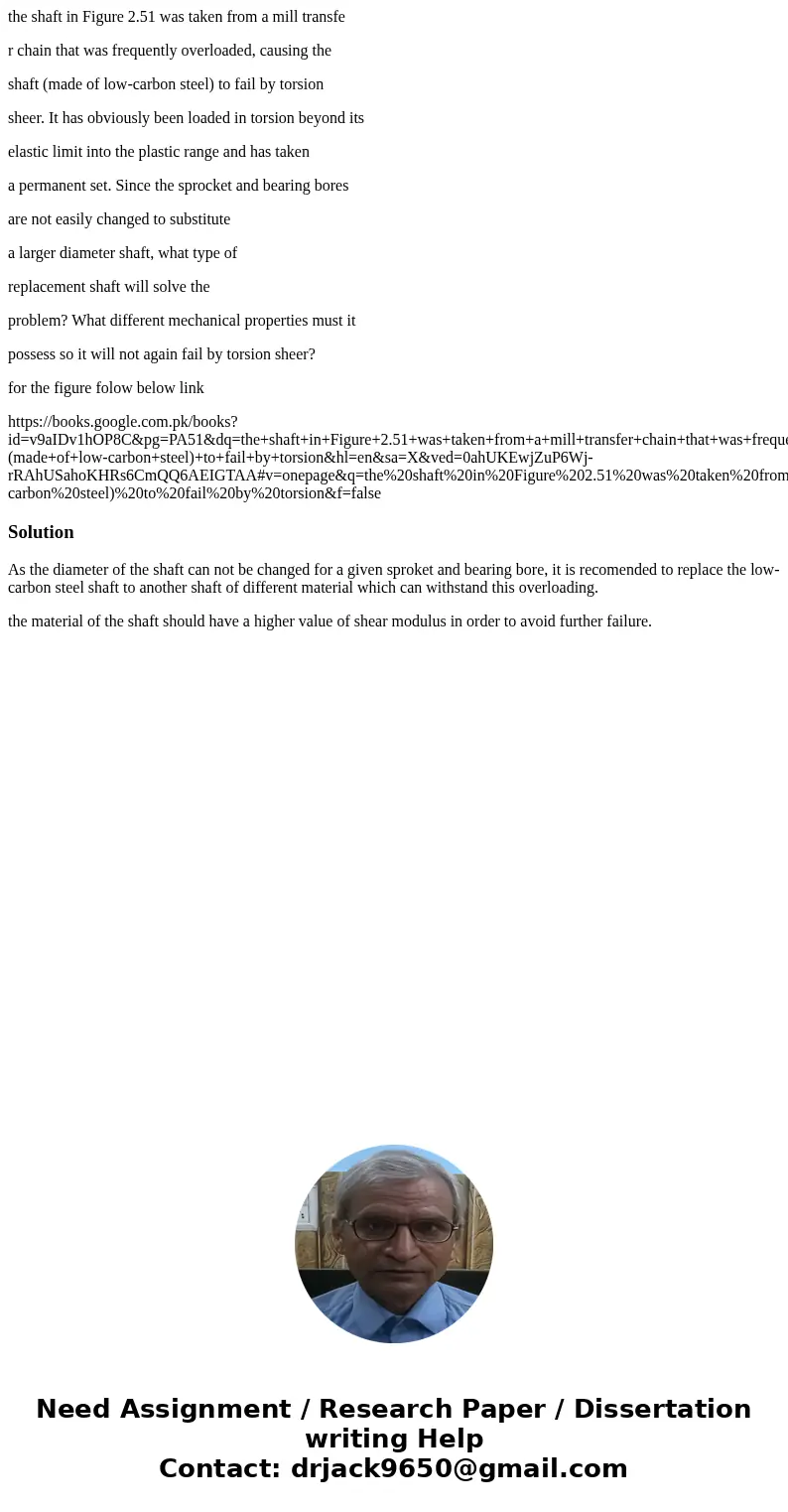the shaft in Figure 251 was taken from a mill transfe r chai
the shaft in Figure 2.51 was taken from a mill transfe
r chain that was frequently overloaded, causing the
shaft (made of low-carbon steel) to fail by torsion
sheer. It has obviously been loaded in torsion beyond its
elastic limit into the plastic range and has taken
a permanent set. Since the sprocket and bearing bores
are not easily changed to substitute
a larger diameter shaft, what type of
replacement shaft will solve the
problem? What different mechanical properties must it
possess so it will not again fail by torsion sheer?
for the figure folow below link
https://books.google.com.pk/books?id=v9aIDv1hOP8C&pg=PA51&dq=the+shaft+in+Figure+2.51+was+taken+from+a+mill+transfer+chain+that+was+frequently+overloaded,+causing+the+shaft+(made+of+low-carbon+steel)+to+fail+by+torsion&hl=en&sa=X&ved=0ahUKEwjZuP6Wj-rRAhUSahoKHRs6CmQQ6AEIGTAA#v=onepage&q=the%20shaft%20in%20Figure%202.51%20was%20taken%20from%20a%20mill%20transfer%20chain%20that%20was%20frequently%20overloaded%2C%20causing%20the%20shaft%20(made%20of%20low-carbon%20steel)%20to%20fail%20by%20torsion&f=false
Solution
As the diameter of the shaft can not be changed for a given sproket and bearing bore, it is recomended to replace the low-carbon steel shaft to another shaft of different material which can withstand this overloading.
the material of the shaft should have a higher value of shear modulus in order to avoid further failure.

 Homework Sourse
Homework Sourse